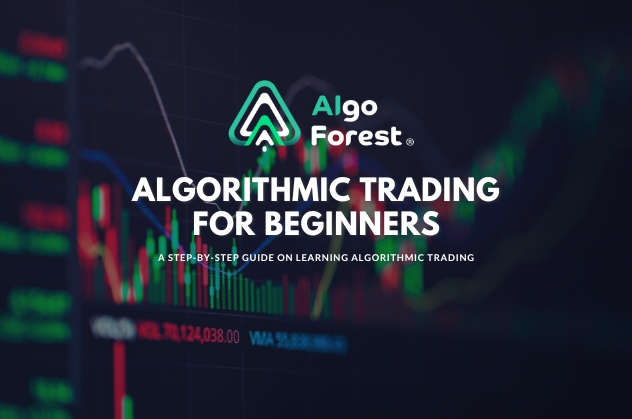


Algorithmic trading has transformed the financial markets, enabling traders to automate strategies, reduce emotional decision-making, and execute trades with precision. But how does it work, and how can beginners get started? This guide breaks down the essentials of algo trading, providing a clear, step-by-step approach to mastering the basics.
Algorithmic trading, or algo trading, involves using automated systems to execute trades based on pre-set rules and strategies. These strategies analyze market data, identify trends, and execute trades without manual intervention.
Selecting the right trading platform is essential for successful algorithmic trading. While platforms like MQL5 (MT4 & MT5), cTrader, and TradingView offer various tools, they often lack comprehensive AI-driven analysis, trade visualization, and community signal sharing.
Due to the limitations of these platforms, Algo Forest has developed a platform where traders can benefit from all the above with the addition of AI!
Our AI Signals Page integrates the best features of other platforms and enhances them with real-time AI-powered insights and community-driven trading signals.
Here’s some of the key features our AI Signals Page offers:
Level up your trading with AI-driven insights! Visit the AI Signals Page Now
Starting with a simple and beginner-friendly trading strategy is key. Here are three tools from Algo Forest that can help:
Backtesting allows you to analyze how a strategy would have performed based on historical data. This reduces trial-and-error risk and helps refine strategy execution. Try our backtesting tool here to get started!
Once a strategy is developed, it must be deployed in a structured and risk-managed way. Follow this 4-step learning process to minimize risk:
This structured approach ensures traders acquire real data and hands-on experience with minimal risk before investing significant capital. Many beginners make costly mistakes due to misunderstanding operations, and this process mitigates that risk effectively.
Mastering algorithmic trading requires a structured approach, from learning key concepts to choosing the right tools and gradually moving into live trading. By starting small, backtesting strategies, and using trusted trading solutions like Dragon Wave, XPower AI, and CCY Power, traders can build confidence and consistency.
Discover the CCY Power Indicator, your ultimate edge in identifying strong and weak currencies in real time.
Whether you're a beginner or a pro, this powerful tool simplifies decision-making and improves your performance when trading currencies and gold.
👉 Get CCY Power and start making informed trades today.
外汇小课堂:外汇交易如何运作︖了解外汇交易的基本原理 外汇交易作为全球交易量最大、流动性最高的金融市场之一,每天的交易总额高达 6.6 兆美元,吸引了无数投资者参与。然而,对于许多外汇新手来说,外汇到底是怎么运作的?是否真的如传说中那般高风险、难以掌握? 本文将带您逐步了解外汇市场的基本架构和操作方式,帮您扫清学习过程中的疑惑。不论您是初学者还是稍有经验的交易者,都可以从本文中获得实用的信息与策略。 外汇交易的基本原理是什麼︖ 外汇交易的核心是「以一种货币兑换另一种货币」,也就是所谓的「货币对」。例如 EUR/USD(欧元/美元)代表购买一欧元所需的美元数。 每种货币都有其标准缩写,例如 EUR 是欧元、USD 是美元。通过查看这些货币对的价格,交易者可以判断当前汇率,并作出买入或卖出的决策。 外汇价格由市场供需决定,全天候波动,因此也为交易者提供了众多机会。 📌 实用小贴士:可通过连接至权威外汇网站查看实时汇率。...
LEARN MORE >>MetaTrader 4 (MT4) and MetaTrader 5 (MT5) are two of the most popular trading platforms...
LEARN MORE >>The rise of artificial intelligence (AI) is reshaping forex trading, making automated trading smarter, faster,...
LEARN MORE >>




